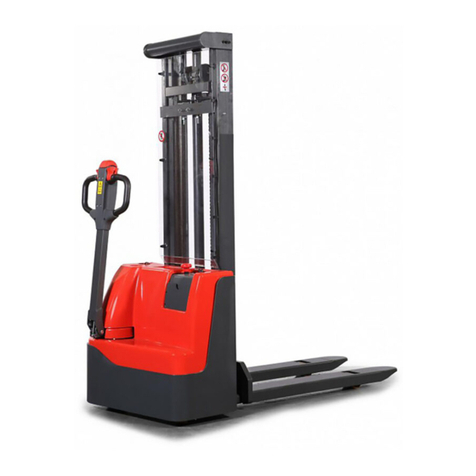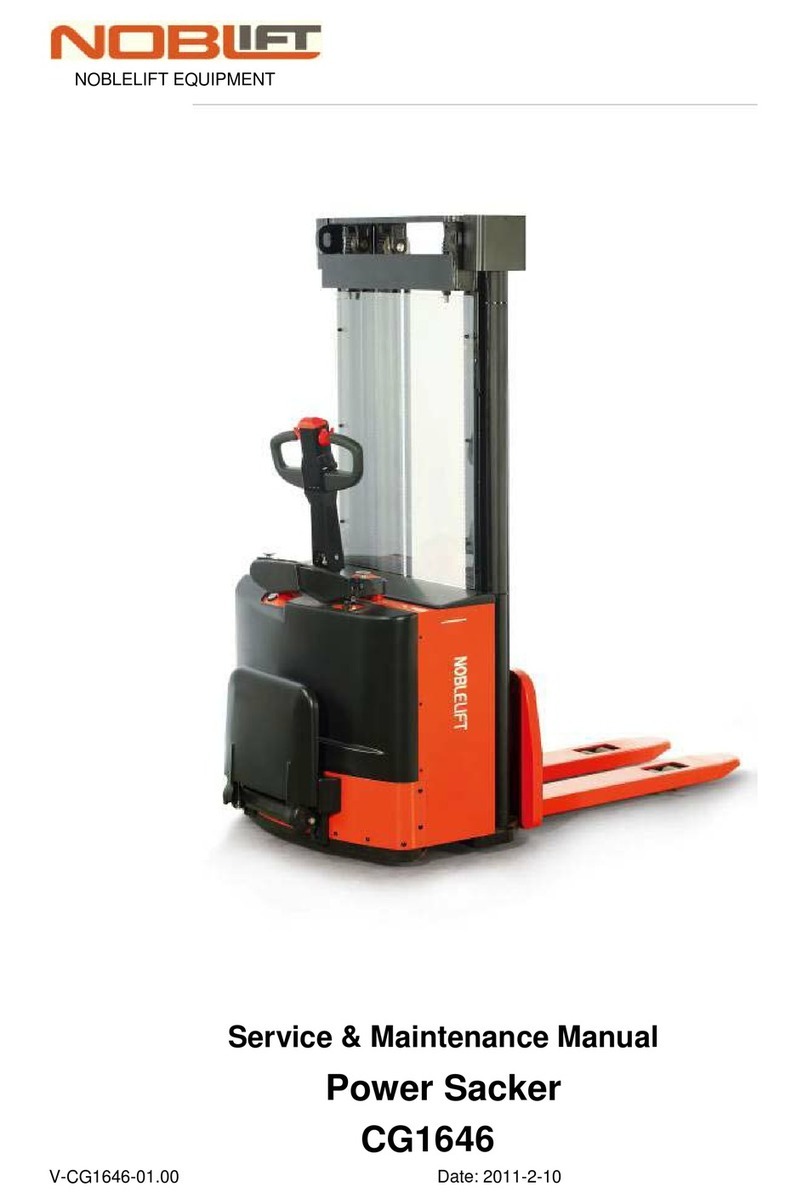
1. CORRECT APPLICATION
It is only allowed to use this electric pallet truck according to this instruction handbook.
The trucks described in this handbook are self propelled electric power pallet trucks. The trucks are
designed to lift, lower and transport palletized loads.
A wrong usage can cause human injuries or can damage equipment.
The operator/ the operating company has to ensure the correct usage and has to ensure, that this pallet
truck is used only by staff, which is trained and authorized to use this truck.
The pallet truck has to be used on substantially firm, smooth, prepared, level and adequate surfaces.
The truck is intended to be used for indoor applications with ambient temperatures between +5C and +
40C and for various transportation applications without crossing permanent obstacles or potholes. The
work on ramps is allowed if ramp is not exceeding the allowed angle. While operating, the load must be
placed approximately on the longitudinal centre plane of the truck.
Lifting or transporting people is forbidden.
If used on tail lifts or loading ramps, please ensure that these are used correctly according to the
operating instructions.
The capacity is marked on capacity sticker as well on the Identification plate. The operator has to
consider the warnings and safety instructions.
Operating lighting must be minimum 50 Lux.
Modification
No modifications or alterations to this pallet truck which may affect, for example, capacity, stability or
safety requirements of the truck, shall be made without the prior written approval of the original truck
manufacturer, its authorized representative, or a successor thereof. This includes changes affecting, for
example braking, steering, visibility and the addition of removable attachments. When the manufacturer
or its successor approve a modification or alteration, they shall also make and approve appropriate
changes to capacity plate, decals, tags and operation and maintenance handbooks.
Only in the event that the truck manufacturer is no longer in business and there is no successor in the interest to the business, may the
user arrange for a modification or alteration to a powered industrial truck, provided, however, that the user:
a) arranges for the modification or alteration to be designed, tested and implemented by an engineer(s) expert in industrial trucks and
their safety,
b) maintains a permanent record of the design, test(s) and implementation of the modification or alteration,
c) approves and makes appropriate changes to the capacity plate(s), decals, tags and instruction handbook, and
d) affixes a permanent and readily visible label to the truck stating the manner in which the truck has been modified or altered, together
with the date of the modification or alteration and the name and address of the organization that accomplished those tasks.
By not observing these instructions, the warranty becomes void.


































